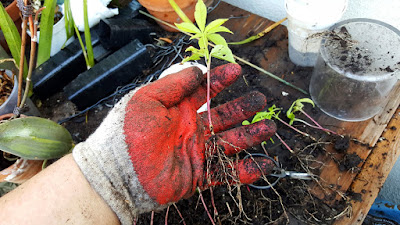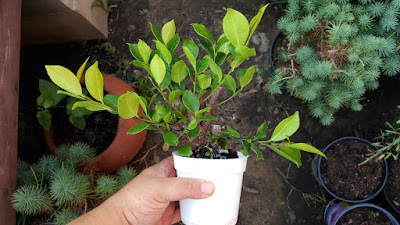A few people have been planting kapok seeds. Last year I planted a few. The growth rate of these trees was phenomenal. I forgot exactly when I planted these seeds. It was sometime last month. As you can see the first true leaves are pretty big on some.
I soaked the seeds until the water started turning cloudy. I have grown kapok seeds in only water before. I kept them in a little saucer and made sure the water stayed clean, and that the water only came up halfway to the seed. For these seeds pictured below however, I planted straight in a one gallon plastic pot.
 |
| My hand for scale |
It is easy to break up the individual plants at this stage. The roots are growing long, but the fine roots have not grown enough to tangle themselves with each other.
I prune the roots of my kapok. Why? I do not want a huge tap root. I cut the lengths according to the size of the tree and the amount of fine roots. The longer and the more fine roots the more I cut.
This was one of the bigger seedlings and I cut just above the halfway point of the root.
I potted the plant with a blend of coconut husk, peat moss, and some soil with coarse sand.
The big trunk in front is approximately one year older than the seedlings behind it. Cutting roots stunts development for a time. Yet, you can see that the kapok is an aggressive grower. I have been working on these trees this last year. If you want to see my expiraments check out my other post: http://bonsai-misadventures.blogspot.com/2016/04/kapok-silk-tree-pre-bonsai-experiments.html
Cheers. 



























